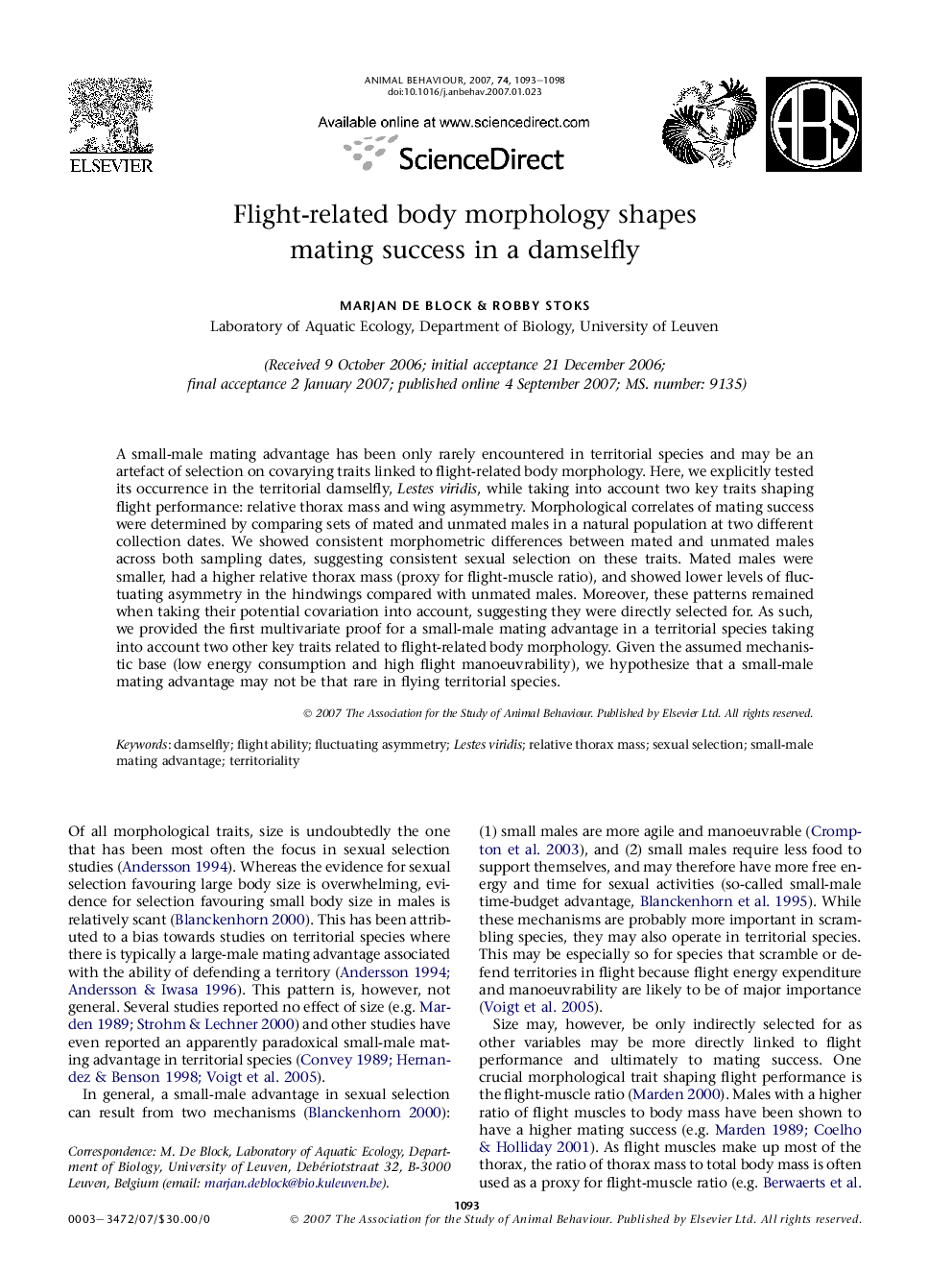| Article ID | Journal | Published Year | Pages | File Type |
|---|---|---|---|---|
| 2418256 | Animal Behaviour | 2007 | 6 Pages |
A small-male mating advantage has been only rarely encountered in territorial species and may be an artefact of selection on covarying traits linked to flight-related body morphology. Here, we explicitly tested its occurrence in the territorial damselfly, Lestes viridis, while taking into account two key traits shaping flight performance: relative thorax mass and wing asymmetry. Morphological correlates of mating success were determined by comparing sets of mated and unmated males in a natural population at two different collection dates. We showed consistent morphometric differences between mated and unmated males across both sampling dates, suggesting consistent sexual selection on these traits. Mated males were smaller, had a higher relative thorax mass (proxy for flight-muscle ratio), and showed lower levels of fluctuating asymmetry in the hindwings compared with unmated males. Moreover, these patterns remained when taking their potential covariation into account, suggesting they were directly selected for. As such, we provided the first multivariate proof for a small-male mating advantage in a territorial species taking into account two other key traits related to flight-related body morphology. Given the assumed mechanistic base (low energy consumption and high flight manoeuvrability), we hypothesize that a small-male mating advantage may not be that rare in flying territorial species.
